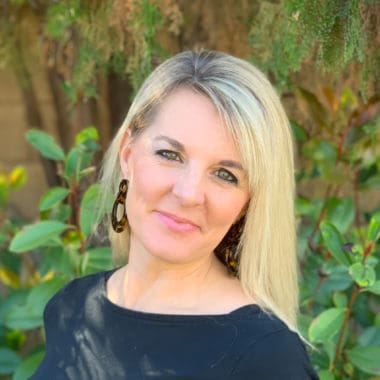This Present Paradise
A Series of Reflections on St. Elizabeth of the Trinity
(Read part 1 here)
The small slip of paper lay crumpled and forgotten at the very bottom of the stack I’d finally gotten around to sorting. I studied it, trying to remember writing the three words scrawled across it: This Present Paradise.
Then my heart skipped a beat. Oh my goodness, Lord. That’s it. That’s the title. You knew it all along, didn’t you? I picked it up slowly. Those three words pulsed with meaning.
Several years before I had been reading a lecture of St. Cyril of Jerusalem on the rites of baptism, which he was addressing to fourth-century catechumens. In it, he tells them he has waited until they were ready, fresh from their baptism and full of new graces, to teach in greater depth what they had experienced: “That I might take and lead you to the brighter and more fragrant meadow of this present paradise,” St. Cyril explained.
I had paused. I felt there was something in those words for me. What exactly, I wasn’t sure. But this wasn’t the first time a phrase had jumped out at me, highlighted with a supernatural marker, as if spoken in streaks of bright yellow. I had learned to pay attention. So I wrote it down, but then promptly—and characteristically—lost it.
Life went on. School years started and ended, filling my office with drawings, report cards, and projects to save. I began to both work and take classes from home, and more stacks were shuffled into my small office just off the kitchen. I launched a blog and began to pile notes for posts wherever there was space. And all the while, those three little words were waiting patiently under my chaos.
Something else was growing along with my mounds of papers. It was a love for St. Elizabeth of the Trinity. It was a desire to introduce her to other women, who, like me, wanted desperately to sanctify that very chaos, to make life—sticky as it was—holy, and to remain recollected (more or less) in the midst of it. So I read about her, wrote a bit about her, wove her story into talks and watched eyes widen as I explained one of her key insights: That if heaven, in the end, is union with God, then our heaven can begin now, in this life. That when we begin to discover the place deep in our interiority where He dwells, when we descend in prayer to meet Him there, we are lifting the veil a little and peeking into eternity. Our life in time was simply, St. Elizabeth said, “eternity begun and still in progress.” Heaven, should we choose to see it, was here. Heaven was, in the early hours of its dawn—right in the center of our hearts. It was— could we say it?— In this present paradise.
You can see where this is going.
So then the Lord planted a new desire within me, to write personal reflections about this new saint. But my shelves were already filling with books about her. Others far more qualified than I had written volumes, and I began to hesitate. Once I had been searching for a poem she’d written, and I turned to a teacher who’d devoted himself to her writings. “Would you like it in French?” he asked, trying to be helpful. I dissolved in doubt. Do I need to know French, too? I must have heard wrong. This isn’t for me.
And then, as I sorted stacks that day, the Lord handed me back the three lost words and gave me both a title and a talking-to: Don’t doubt me, He said. I knew about this before you knew about her. And on that slip of paper was my evidence. I’ve given you the first trinity of words. Now let’s begin. How could I not?
So next time we’ll look at the little girl Elizabeth who very early on, knew the grief of loss.
That is, if I can find my laptop under these piles….
(Read part 3 here.)




